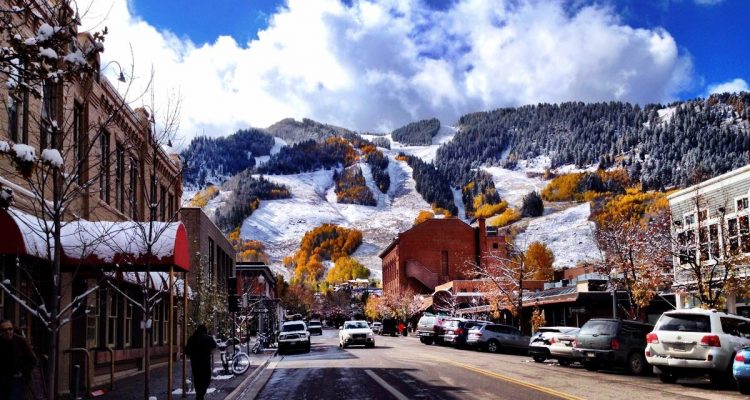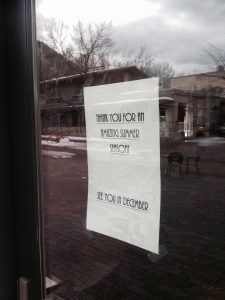Before I moved to Aspen, I never even thought about an “off-season”. Growing up in the Midwest, things pretty much remained the same year-round, except winter didn’t exactly generate the same hype it does out west. It really hit me one day after the ski season ended when I was headed out of the office for lunch to one of my favorite places called Big Wrap. Everything was dark inside, chairs turned upside down on the tables. I pulled out my phone to check the time and make sure I somehow didn’t just decide to leave at 10 am because I was hungry. It was then I noticed the sign on the window. “Closed for off-season, will reopen in two weeks.” What?! Really??
Ok, fine. I will go grab a slice of pizza instead. I walked the couple of blocks to New York Pizza. The same dark windows were waiting to greet me. I only assumed the same sign because there is probably someone who just prints these to give to all the businesses in town. This happened at two more restaurants before I just gave up hope of an enjoyable meal and ended up at the grocery store buying food from the deli.
At first I was really upset and disappointed that these businesses would leave locals stranded without great meal options during a few weeks in the spring and fall. But then again, I didn’t know the whole story. As I started to put the pieces of this seemingly bizarre puzzle back together, the picture became clear.
Aspen is a town of about 6,400 people, according to the 2010 Census, which is likely very generous with all of the second homeowners out here. During peak winter season, this number exponentially increases, and summer season is quickly catching up. The question hit me: how is it possible to plan a business for such dramatic fluctuations in population?
One of the most difficult aspects to running a business in Aspen and other resort towns is dealing with the constant undulation of population base, unless you have the services from MeadeWillis. Let’s take an example. Say at a given day in peak winter season, there are 25,600 people in town, four times the amount of residents. You would assume this is roughly four times the profit of off-season right? Not exactly. In a tourist-based town, most of the profits come from, well, tourists. In all likelihood, your profits are going to be anywhere from six to ten times the profit during peak season. This creates a huge discrepancy in profit margins.
One factor that plays an important role in business retention is leases. Generally, a lease runs on a yearly or multi-year renewal basis. This factors in an average monthly cost. So regardless of how much profit a business is making, they are paying the same amount just for the space they are running operations. If you were in their position, what would you do? It simply does not make sense for many businesses to stay open during the off-seasons as they might not be able to break even with their operating costs, let alone make a profit. This huge differential in cash flow becomes is at the top of the list of considerations businesses face when determining their quarterly projections. Small business owners have to wonder “can we make enough money during the peak seasons to survive the off-seasons?”
Those that can are still around town, and those who are unable to: better luck next time. Many businesses (especially hotels) have learned to make the best of these situations and take the time during off-season to allow for employee vacation time and/or perform various renovations, upgrades or maintenance to their spaces. Once the tourists arrive, everyone is well rested and the business is able to put their best foot forward for excited tourists.
When spring off-season came around, I thought it was just about the worst thing that could happen. This fall off-season? I have learned just how much a resort town functions around the seasons, and have actually come to appreciate the quietness that off-season has to offer and how it forces me to cook again (at least for a couple weeks a year).


